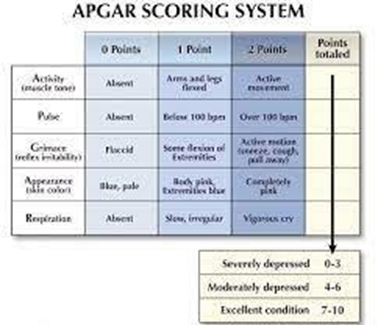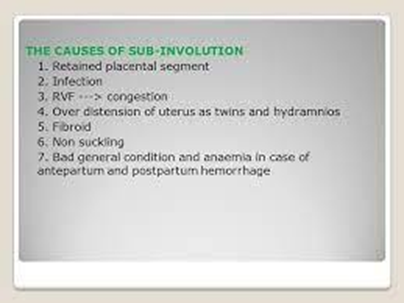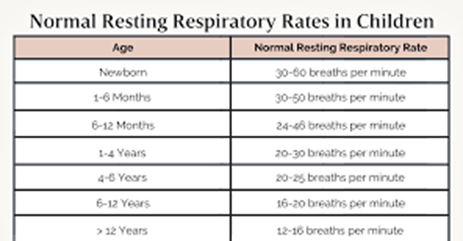ATI Maternal Newborn Exam 3 Reno 2 2020
Total Questions : 56
Showing 25 questions, Sign in for moreA nurse is planning care for a client who is 2 hours postpartum following a cesarean birth. The client has a history of thromboembolic disease. Which of the following nursing interventions should be included in the plan of care?
Explanation
A. Placing pillows under the client's knees may provide comfort but does not address the prevention of thromboembolic disease.
B. Massaging the client's posterior lower legs may increase the risk of dislodging a clot in clients with a history of thromboembolic disease.
C. Having the client ambulate helps prevent venous stasis and reduces the risk of thromboembolic events.
D. Applying warm, moist heat to the client's lower extremities may provide comfort but does not address the prevention of thromboembolic disease.
A mother and her newborn have just been transferred to the postpartum unit from labor and delivery. Which infant safety education would be provided as soon as mom and baby are settled into their room? Select all that apply. One, some, or all responses may be correct.
Explanation
A. Hand hygiene is crucial to prevent the spread of infections to the newborn.
B. Keeping identification bands on ensures proper identification of the newborn.
C. Keeping the infant within sight reduces the risk of abduction.
D. Verifying staff identification enhances security and prevents unauthorized individuals from handling the newborn.
E. Sending the newborn to the nursery at night may compromise the mother-infant bonding and is not a recommended practice.
A nurse is caring for a client who is postpartum who asks the nurse when her breast milk will "come in." Which of the following responses should the nurse make?
Explanation
A. Breast milk typically comes in 3 to 5 days postpartum.
B. This timeline is too early for the onset of mature breast milk.
C. This timeline is too late for the onset of mature breast milk.
D. This timeline is too late for the onset of mature breast milk.
A nurse is caring for a client who is postpartum. The nurse should recognize which of the following statements by the client as an indication of inhibition of parental attachment?
Explanation
A. Expressing dissatisfaction with the baby's appearance may indicate a lack of immediate bonding.
B. Noting physical features shared with the father suggests recognition and connection.
C. Declining a baby bath demonstration doesn't necessarily indicate a lack of attachment.
D. Requesting nursery care for sleep doesn't necessarily indicate a lack of attachment.
A nurse is assisting with the care of a newborn immediately following birth. Which of the following medications should the nurse anticipate administering? (Select all that apply.)
Explanation
A. Hepatitis B immunization is typically administered soon after birth for protection.
B. Hib immunization is usually given later and not immediately after birth.
C. Lidocaine gel is not routinely used on the umbilical stump.
D. Vitamin K injection is commonly given to prevent bleeding disorders in newborns.
E. Antibiotic ointment to both eyes prevents eye infections that can be caused by bacteria transmitted from the mother during delivery.
You're assessing the one-minute APGAR score of a newborn baby. On assessment, you note the following about your newborn patient: weak cry, some flexion of the arm and legs, active movement and cries to stimulation, heart rate 145, and pallor all over the body and extremities. What is your patient's APGAR score?
Explanation
A. A score of 4 would indicate severe distress, but the baby in this scenario shows signs of responsiveness and activity.
B. A score of 6 suggests moderate adaptation to extrauterine life, considering some components of the APGAR are within the normal range.
C. A score of 10 is perfect, but the noted symptoms suggest some difficulties.
D. A score of 9 would be high and not consistent with the observed signs of distress.

A nurse is assisting a client who is postpartum with her first breastfeeding experience.
When the client asks how much of the nipple she should put into the newborn's mouth, which of the following responses should the nurse make?
Explanation
A. Proper latch involves placing both the nipple and a portion of the areola into the baby's mouth.
B. While babies have instincts, guidance on proper latch is essential for successful breastfeeding.
C. Placing the nipple and areola under the tongue is not accurate guidance for breastfeeding.
D. Limiting the latch to part of the nipple may lead to ineffective breastfeeding.
A primiparous woman is in the taking-in stage of psychosocial recovery and adjustment after childbirth. Recognizing the needs of women during this stage, how should the nurse respond?
Explanation
A. This is not appropriate for the taking-in stage, as the woman may not be ready to absorb new information or focus on self-care. She may need more verbal instruction and demonstration from the nurse.
B. The taking-in stage is a period of passive, dependent behavior in which the woman reviews her childbirth experience and adjusts to the new role of motherhood. She may need to talk about her labor and delivery repeatedly and seek reassurance from others. The nurse should listen attentively and validate her feelings.
C. This is more suitable for the taking-hold stage, which occurs after the taking-in stage. In this stage, the woman becomes more active and independent, and shows interest in learning how to care for herself and her baby.
D. This is also more appropriate for the taking-hold stage, when the woman develops confidence and competence in her maternal role. In the taking-in stage, she may be more focused on her own needs and rely on others to care for the baby.
The nurse is preparing to administer a hepatitis B virus (HBV) vaccine to a newborn. Which intervention by the nurse is correct?
Explanation
A. The hepatitis B vaccine is typically administered after confirming that the newborn is at least 24 hours old.
B. Needle gauge and length are important considerations, but they depend on the injection site.
C. The preferred site for injection is the vastus lateralis muscle (anterolateral thigh), not the dorsogluteal muscle.
D. Maternal infection status does not impact the administration of the HBV vaccine to the newborn.
A nurse in the nursery is caring for a newborn. The grandmother of the newborn asks if she can take the newborn to the mother's room. Which of the following is an appropriate response by the nurse?
Explanation
A. The nurse should not allow anyone other than the mother or the father to take the newborn to the mother's room. This is to prevent infant abduction, which is a serious threat in hospitals. The nurse should also verify the identity of the mother or the father before handing over the newborn. The nurse should instruct the grandmother to have the mother call and request for the newborn to be brought to her room.
B. This is incorrect because pushing the baby in a wheeled bassinet is not a secure way of transporting the newborn. The bassinet could be easily taken by someone else or accidentally rolled away. The nurse should always accompany the newborn when moving from one place to another.
C. This is incorrect because carrying the grandchild to the room is also not a secure way of transporting the newborn. The grandmother could be stopped by someone who claims to be a staff member and asked to hand over the newborn. The nurse should never let anyone carry the newborn without proper identification and authorization.
D. This is incorrect because showing photo identification is not enough to prove that the person is related to the newborn. The nurse should only allow the mother or the father to take the newborn, and only after verifying their identity with a wristband or a code. The nurse should not rely on photo identification alone, as it could be forged or stolen.
A nurse on a postpartum unit is giving discharge instructions to a client whose newborn had a circumcision with the Plastibell technique. Which of the following client statements indicates understanding of circumcision care?
Explanation
A. Applying petroleum jelly is not recommended with the Plastibell technique as it may interfere with the ring falling off.
B. The client should also keep the diaper loose in the front to prevent pressure or irritation on the penis.
C. The ring to fall off by itself within 5 to 10 days. Do not try to remove it yourself or pull on it.
D. Washing with warm water and mild soap is generally good hygiene but may not be necessary for circumcision care.
A new mother asks the nurse what the "experts say" about the best way to feed her infant. Which recommendation of the American Academy of Pediatrics (AAP) regarding infant nutrition should be shared with this client?
Explanation
A. The introduction of solid food is recommended at similar times for both breastfed and formula-fed infants.
B. The AAP recommends exclusive human milk feeding for the first 6 months of life.
C. After 6 months, complementary foods are introduced, not a shift to cow's milk.
D. If weaned before 12 months, formula is a suitable alternative to breast milk.
A nurse places a newborn under a radiant heat warmer after birth. The purpose of this action is to prevent which of the following in the newborn?
Explanation
A. The radiant heat warmer does not prevent brown fat production, which is a normal response to cold exposure in newborns.
B. Shivering is a response to cold and not prevented by the radiant heat warmer.
C. The radiant heat warmer helps prevent cold stress by maintaining the newborn's body temperature.
D. Basal metabolic rate reduction is not a specific concern addressed by the radiant heat warmer.
What are the most common causes for subinvolution of the uterus?
Explanation
A. Uterine tetany and overproduction of oxytocin are not typically associated with subinvolution.
B. Multiple gestation and postpartum hemorrhage may contribute to uterine atony but not necessarily subinvolution.
C. The most common causes of subinvolution are retained placental fragments and infection.
D. Postpartum hemorrhage may contribute to uterine atony but is not a direct cause of subinvolution.

A woman gave birth to a 7-pound, 6-ounce infant girl 1 hour ago. The birth was vaginal and the estimated blood loss (EBL) was 1500 ml. When evaluating the woman's vital signs, which finding would be of greatest concern to the nurse?
Explanation
A. While the heart rate and respiratory rate are elevated, the blood pressure and temperature are within an acceptable range.
B. The heart rate and respiratory rate are within normal limits, and the blood pressure is elevated but not as concerning as other options.
C. The temperature and blood pressure are within normal limits, and while the heart rate is slightly elevated, it is not as concerning as other options.
D. The elevated heart rate, low blood pressure, and elevated temperature may indicate hypovolemic shock, which is of greatest concern given the history of significant estimated blood loss.
A nurse is caring for a newborn immediately following birth. After assuring a patent airway, what is the priority nursing action?
Explanation
A. Placing an identification bracelet is important but not the immediate priority after ensuring a patent airway.
B. Drying the skin is a priority to prevent heat loss and promote thermoregulation in the newborn.
C. Administering vitamin K is important but can be done after drying the skin.
D. Administering eye prophylaxis is important but can be done after drying the skin.
A nurse is providing teaching about newborn care to a client who is 2 hr postpartum. Which of the following statements by the client indicates a need for further teaching?
Explanation
A. Keeping the baby's bassinet away from fans and air conditioning is a correct practice to prevent chilling.
B. Checking the baby's temperature rectally every hour is not a standard practice and may lead to unnecessary discomfort for the baby.
C. Keeping the baby's head covered is generally recommended for warmth.
D. Keeping the infant swaddled in a warm blanket is a good practice for maintaining warmth.
Which documentation on a woman's chart on postpartum day 14 indicates a normal involution process?
Explanation
A. Moderate bright red lochial flow on postpartum day 14 may indicate excessive bleeding and is not indicative of normal involution.
B. A fundus below the symphysis and nonpalpable suggests a well-contracted uterus, which is indicative of normal involution.
C. An episiotomy that is slightly red and puffy on day 14 may indicate ongoing healing, but it is not a direct measure of uterine involution.
D. Breasts that are firm and tender on postpartum day 14 may indicate engorgement, but they are not directly related to uterine involution.
A nurse is teaching about crib safety with the parent of a newborn. Which of the following statements by the client indicates understanding of the teaching?
Explanation
A. Placing the baby on the stomach is not recommended due to the risk of sudden infant death syndrome (SIDS).
B. Placing the crib next to the heater may cause overheating, which is a risk factor for SIDS.
C. Removing extra blankets from the baby's crib is important to reduce the risk of SIDS.
D. Padding the mattress in the baby's crib is not recommended as it can pose a suffocation risk.
A nurse is teaching about crib safety with the parent of a newborn. Which of the following statements by the client indicates understanding of the teaching?
Explanation
A. Placing the baby on the stomach is not recommended due to the risk of sudden infant death syndrome (SIDS).
B. Placing the crib next to the heater may cause overheating, which is a risk factor for SIDS.
C. Removing extra blankets from the baby's crib is important to reduce the risk of SIDS.
D. Padding the mattress in the baby's crib is not recommended as it can pose a suffocation risk.
A nurse is caring for a newborn and auscultates an apical heart rate of 130/min. Which of the following actions should the nurse take?
Explanation
A. An apical heart rate of 130/min is within the normal range for a newborn and does not require immediate intervention.
B. Contacting the provider is not necessary as the heart rate is within the expected range.
C. Preparing for NICU transport is not warranted based on a heart rate of 130/min.
D. Verifying the heart rate with another nurse is unnecessary for a heart rate within the normal range.
A nurse is assessing a newborn 1 hr after birth. Which of the following respiratory rates is within the expected reference range for a newborn?
Explanation
A. A respiratory rate of 110/min is too high for a newborn and may indicate respiratory distress.
B. A respiratory rate of 100/min is too high for a newborn and may indicate respiratory distress.
C. A respiratory rate of 22/min is too low for a newborn.
D. A normal respiratory rate for a newborn is between 40 and 60 breaths per minute.

A nurse is providing discharge teaching to a client who is 3 days postoperative following a cesarean birth. Which of the following client statements indicates to the nurse that further teaching is needed??
Explanation
A. Having a fever during the first week at home is not a normal or expected finding and may indicate an infection, requiring further assessment.
B. Contacting the provider for incisional discharge is a proper response.
C. Not having unrelieved pain in the abdomen is an appropriate expectation.
D. Resuming prenatal vitamins is a normal postoperative recommendation.
A nurse is caring for a client who reports unrelieved episiotomy pain 8 hr following a vaginal birth. Which of the following actions should the nurse take?
Explanation
A. A hot pack to the perineum can be offered after 24 hours, but not before, as heat can increase bleeding.
B. A warm sitz bath can be offered after 24 hours, but not before, as heat can increase bleeding and infection risk.
C. The nurse should also apply an ice pack to the perineum for 20 minutes every 4 hours to reduce swelling and inflammation.
D. Providing a squeeze bottle of antiseptic solution is more related to perineal hygiene rather than pain relief.
A nurse is preparing to administer antibiotic X over 20 min. Available is antibiotic X in 50 mL of 0.9% sodium chloride (NSS). The drop factor of the manual IV tubing is 20 gtt/mL. The nurse should set the manual IV infusion to deliver how many gtt/min? (Round the answer to the nearest whole number. Use a leading zero if it applies. Do not use a trailing zero.)
Explanation
To calculate the infusion rate for antibiotic X, the nurse needs to use the formula: gtt/min = (Volume x Drop factor) / Time
Plugging in the values from the question, we get:
gtt/min = (50 mL x 20 gtt/mL) / 20 min Simplifying, we get:
gtt/min = 1000 gtt / 20 min Dividing, we get:
gtt/min = 50 gtt/min
Therefore, the nurse should set the manual IV infusion to deliver 50 gtt/min.
Sign Up or Login to view all the 56 Questions on this Exam
Join over 100,000+ nursing students using Nursingprepexams’s science-backend flashcards, practice tests and expert solutions to improve their grades and reach their goals.
Sign Up Now

